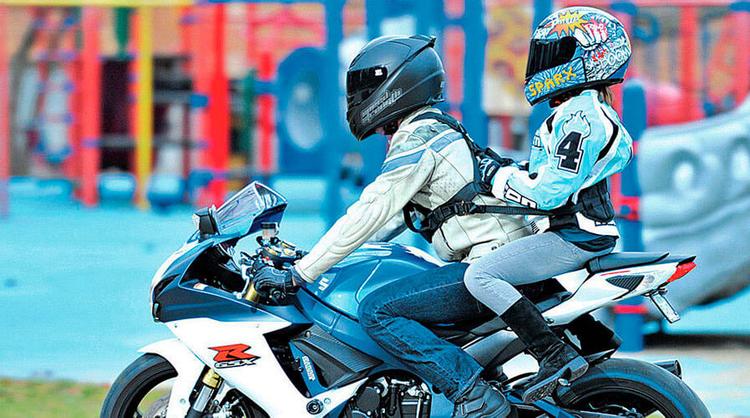
Safety tips for motorcycle passengers
Motorcycle riding is too wonderful to not share, so we’ve prepared these passenger safety tips. Taking a safety-first approach as a passenger can help ensure an enjoyable, comfortable experience for both you and the bike’s operator. Let’s make every two-up ride safe and fun!
Understand motorcycle passenger laws
Before you hop onto the back of the bike, make sure you and the operator are familiar with state laws regarding passengers and the use of safety gear.
Safety equipment: Most states require motorcycles to be properly equipped with dedicated passenger seats and foot pegs in order to legally carry passengers. Additionally, helmet laws vary from state to state. For your safety, we strongly encourage you to wear a helmet even when it’s not required.
Passenger age limit: Most states have no motorcycle passenger age limit. That said, it’s crucial that you’re capable of securely sitting on the seat and reaching the foot pegs. You also need to be strong and balanced enough to grip the passenger handles or hold onto the operator to help ensure stability.
Establish a communication plan
Communication between you and the operator is vital, both before and during the ride. As you prepare for your ride, determine how you’ll communicate with one another:
Hand signals: Even if you’re longtime co-riders, a pre-ride refresh is smart. Determine the most common things you need to express and develop a code for them. For example, you might need to ask your companion to slow down or pull over, and they may want to ask you to sit still.
Bluetooth-enabled helmets: Bluetooth helmet communication devices have brought communication capabilities to every motorcycle, something that used to be limited to wired connections on big touring motorcycles. These days, many helmets have preinstalled Bluetooth technology, while others come ready for installation.
Evaluate your risks before your ride
Experienced, safety-conscious motorcycle operators focus on preparation before each ride. As a passenger, you also have risks to evaluate before you accept a ride on someone’s motorcycle.
How experienced is your riding partner? Know the operator. How long have they been riding? Have they carried passengers before? Do they have a valid motorcycle license?
Where, when, and how long will you travel? Reducing uncertainty can make for a better experience. Ask the following questions:
- Will we stop anywhere to rest?
- What’s our destination?
- When will we leave and return?
- What’s the weather forecast?
Familiarize yourself with the motorcycle
Motorcycle owners invest a lot of time and attention into adjusting their saddle, handlebars, and controls for a comfortable ride. It’s important to do the same to help ensure your comfort and safety. Before you hop on, discuss the motorcycle’s accommodations with the operator.
Keep safety top of mind
Even though you aren’t operating the motorcycle, you still need to be an active participant in the ride.
Look out for danger: As a passenger, you have another pair of eyes to help the operator spot danger. This is where your established communication plan can make a real, positive impact.
Stay awake: While it’s hard to believe anyone could fall asleep zooming through the world on a motorcycle, it does happen. But it’s not safe to sleep on the back seat of a motorcycle. Being jolted awake can destabilize the bike, which could lead to an accident. If you start feeling sleepy, ask for a rest stop to stretch and refresh.
Sharing a motorcycle ride with a friend or family member can be incredibly rewarding—as long as you practice safe riding habits.